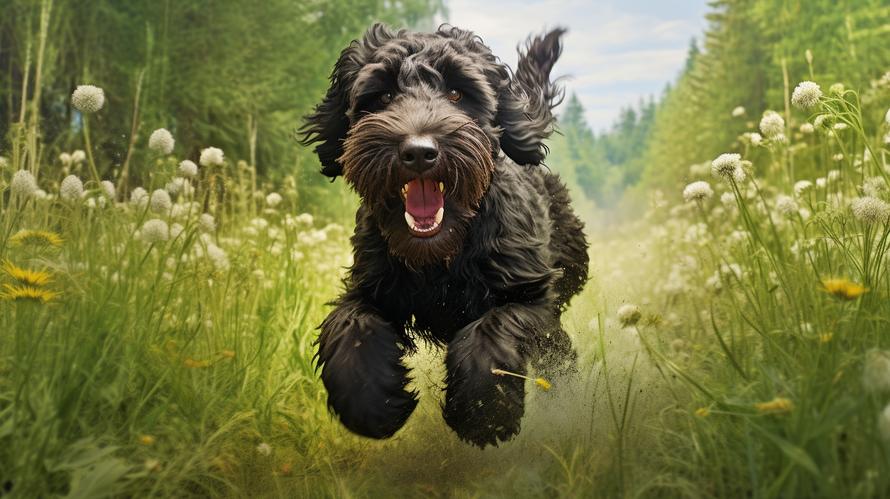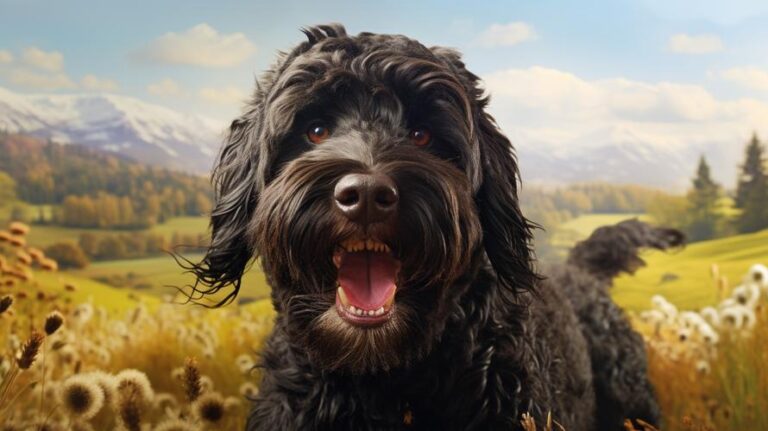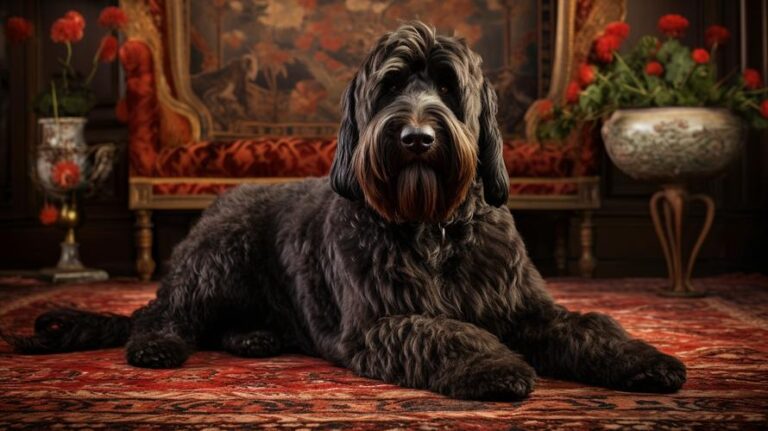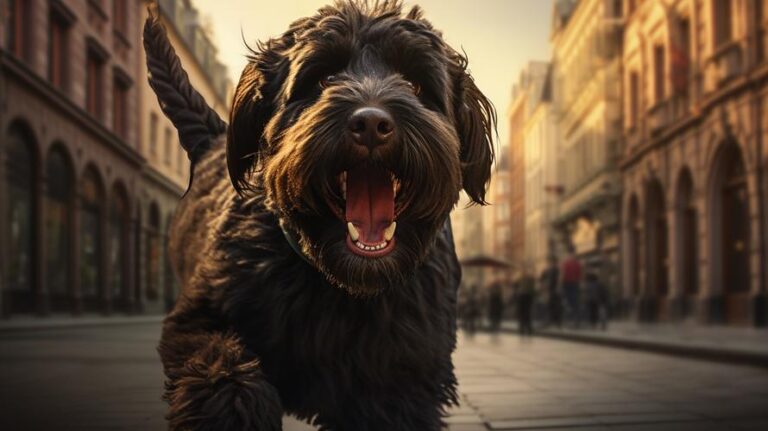In the land of canine, where does the Black Russian Terrier stand? Is it the formidable aggressor that some perceive it to be? Or, is it a misunderstood gentle giant? To an untrained eye, this large, imposing breed with a dark, thick coat could certainly seem intimidating. However, to anyone acquainted with the breed, the Black Russian Terrier, or “BRT” for short, is more of a gentle bear than a wild wolf. Let’s get rid of this assumption that these K-9 kahunas are aggressive beasts and dig a little deeper into the true nature of this breed.
This breed is the culmination of an intense, 20-year selective program, orchestrated by the Russian Red Army. Their task was to develop a robust, versatile, super-dog that could withstand Russia’s harsh climate and solve various military and police needs. In doing so, they crossed a whopping seventeen breeds – including the Airedale Terrier, the Rottweiler, and the Great Dane. Finally, they brought forth the Black Russian Terrier, also known as the Russian Bear Schnauzer, the Black Terrier, the Tchiorny Terrier, or the BRT. They started appearing in show-rings outside Russia by the 1980s, getting official recognition from the American Kennel Club in 2004.
It’s important to note that these dogs were bred to work, which means the BRT is intelligent, quick to learn, versatile in roles, and has a vast reserve of energy. They continuously need challenging tasks to keep their brains and bodies active. If they don’t utilize that energy well, they can get restless, and destructive behaviors could occur. Some individuals mistake this restlessness as aggression, but it’s crucial to understand the difference.
Let’s address the elephant in the room – the word “aggressiveness.” While many people perceive aggressiveness as outright hostility, it’s essential to differentiate between “true aggressive behavior” and “protective behavior” or “negative reactions caused by poor socialization or fear”. A dog that is aggressive may attack other dogs or people without provocation, while a canine acting protectively or in fear might react when it feels cornered or sees a threat to its loved ones.
When we look at Black Russian Terriers from this perspective, you’ll find that they are not an aggressive breed. Instead, they are famously protective and reserved. BRTs are known for their undying loyalty to their families and a strong instinct to protect their home and loved ones. However, their protective nature doesn’t equate to unnecessary aggressiveness. They are typically calm, confident and versatile beasts that can switch from being couch potatoes to fearless protectors in an instant.
Still, like with all breeds, BRTs can exhibit negative behaviors if they are not appropriately trained and socialized. This is where the responsibility lies on the pet parent. The BRT isn’t a breed for the novice dog owner. They need someone who understands their specific breed needs, can provide early socialization, consistent training, and a steady, firm hand.
Early socialization is crucial for Black Russian Terrier puppies. In their early weeks, they should meet a variety of people, encounter various objects and sounds, and have positive experiences with other animals. This broad exposure helps them develop into a well-rounded, well-adjusted adult dog.
Training for a BRT should start early and be consistent. With the breed’s intelligent nature, they need engaging, mentally stimulating training sessions that challenge them. Monotonous tasks can bore them and lead to disinterest in training. Instead of traditional methods, try incorporating task-based learning, agility training, or nose work in their training routines.
When bringing up a BRT, remember patience is your best friend. They are late bloomers – often not fully maturing until they are 2-4 years old. So, any training or socialization effort requires time and patience before it starts to show results.
So, to conclude our investigation, Black Russian Terriers are not an aggressive breed. Misunderstood at times, due to their intense protective instincts and imposing physique? Perhaps. More than capable of causing havoc if not properly trained and socialized? Absolutely. But at their core, they are affectionate, loyal dogs that love nothing more than to be part of a family – a family they would bravely defend at a moment’s notice. Like any other dogs, they are a product of their genetics, upbringing, and environment. Treat them right, and they’ll repay you with a lifetime of loyalty, protection, and companionship.



